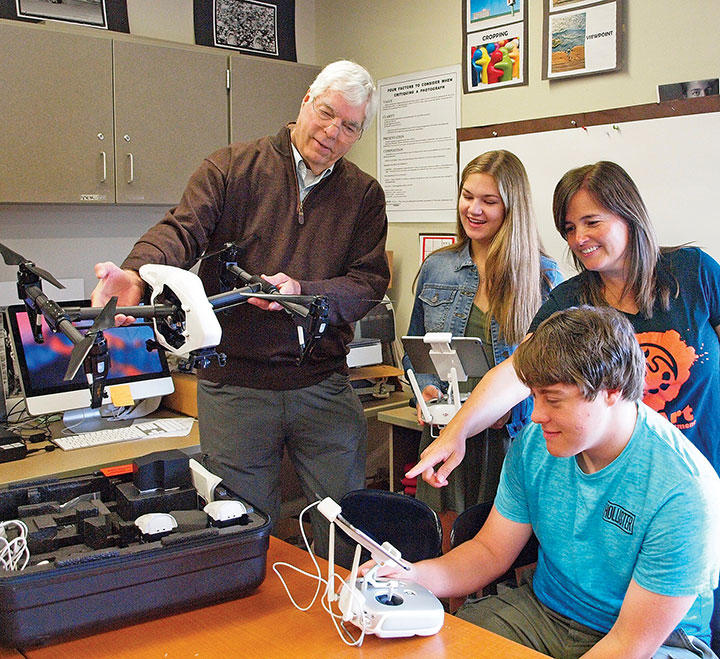Paul Wing ’62: In Retirement, a New Passion Emerges: Teaching
In 2008, after a 40-year engineering career, Paul Wing ’62 retired. His plan was to spend a lot more time with his wife, Priscilla, at their home in Bethlehem, N.Y.
A day later, Priscilla suffered a catastrophic stroke. Wing spent the next five years caring for her, building a handicapped-accessible house with boardwalks and a separate, one-room “vacation home” in the backyard. When she died in 2014, after a half-century of marriage, he had a new task: discovering what came next.
His answer was to bring technology to the nearby Bethlehem Central School District. “I realized that unless something is done to help students now in elementary, middle, and high school, they will be totally left behind in this period of amazing scientific advancements,” he said.
Now, the 77-year-old squeezes his 6-foot, 6-inch body into elementary school chairs as part of a STEAM (Science, Technology, Engineering, Art, and Math) program that he has founded. Over the past four years, he has donated $80,000 and many hours of after-school labor to a program where grade-schoolers build simple robots, middle-schoolers work with 3D printers, and high-schoolers fly drones.
The idea is to show students STEAM applications in the real world, instead of just talking about the science of, say, the physics or biology behind them. When one elementary school program was announced, more than 80 fourth- and fifth-graders applied for 12 slots in the semester-long session.
After he earned a degree in engineering, Wing and his wife moved to California for graduate study. His studies led him to a data-driven career, designing and conducting research studies and surveys, analyzing data, and using forecasting models in education and health care.
According to the U.S. Department of Commerce, occupations in STEM (Science, Technology, Engineering, and Math) grew by 24 percent in the last decade, compared to 4 percent growth for non-STEM occupations. STEM workers also command wages that average 12 percent more than non-STEM positions.
Wing, who notes that his contributions make up just .02 percent of the district’s $94 million budget, hopes other people in his position will make similar contributions to promote the hard sciences.
“You can do this yourself,” he said. “You can make an impact. That’s the message — you can really accomplish a great deal.”












No responses yet